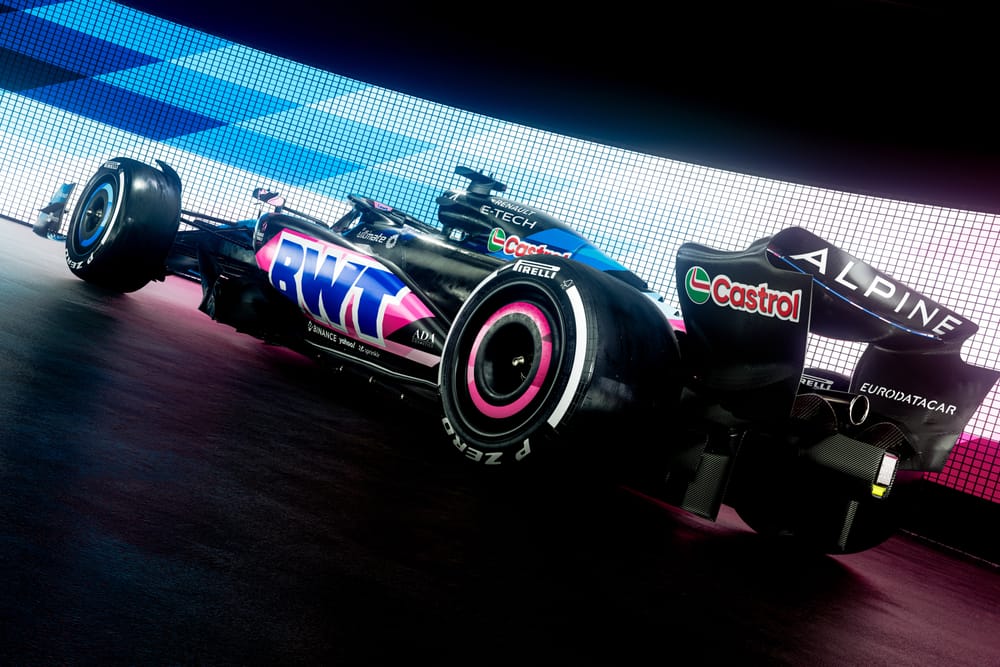Up Next

The Alpine Formula 1 team went through a major management reshuffle last season and so far hasn't poached any experienced replacements for those who left.
Bruno Famin, who took over as interim team principal in the middle of 2023, says he's seen enough to prove that the team is going in the right direction, so it's all about those changes opening the door for the existing staff to up their game.
The loss of Alpine CEO Laurent Rossi, team principal Otmar Szafnauer, chief technical officer Pat Fry and sporting director Alan Permane, together with Davide Brivio, who was head of something different every day he went into the office, will create a detour in the direction the team was taking. But sometimes that needs to happen to reinvigorate everyone else.
Famin's said he'll hire two new chief operating officers - one for the team's Enstone base and one for the engine operation in Viry - to focus on day-to-day business matters so he can better prioritise his F1 team boss and VP of motorsport roles. Until that happens he's going to be spread quite thin.
Alpine did improve in the latter part of last season, but was inconsistent. It has two drivers who are very capable, but who seem to spend a bit too much time battling with each other on the track and not taking in the big picture, which is that the team is more important than either of them. Famin must stamp that out, and quickly, to ensure Pierre Gasly and Esteban Ocon get the best points haul out of the car that the team produces for 2024.
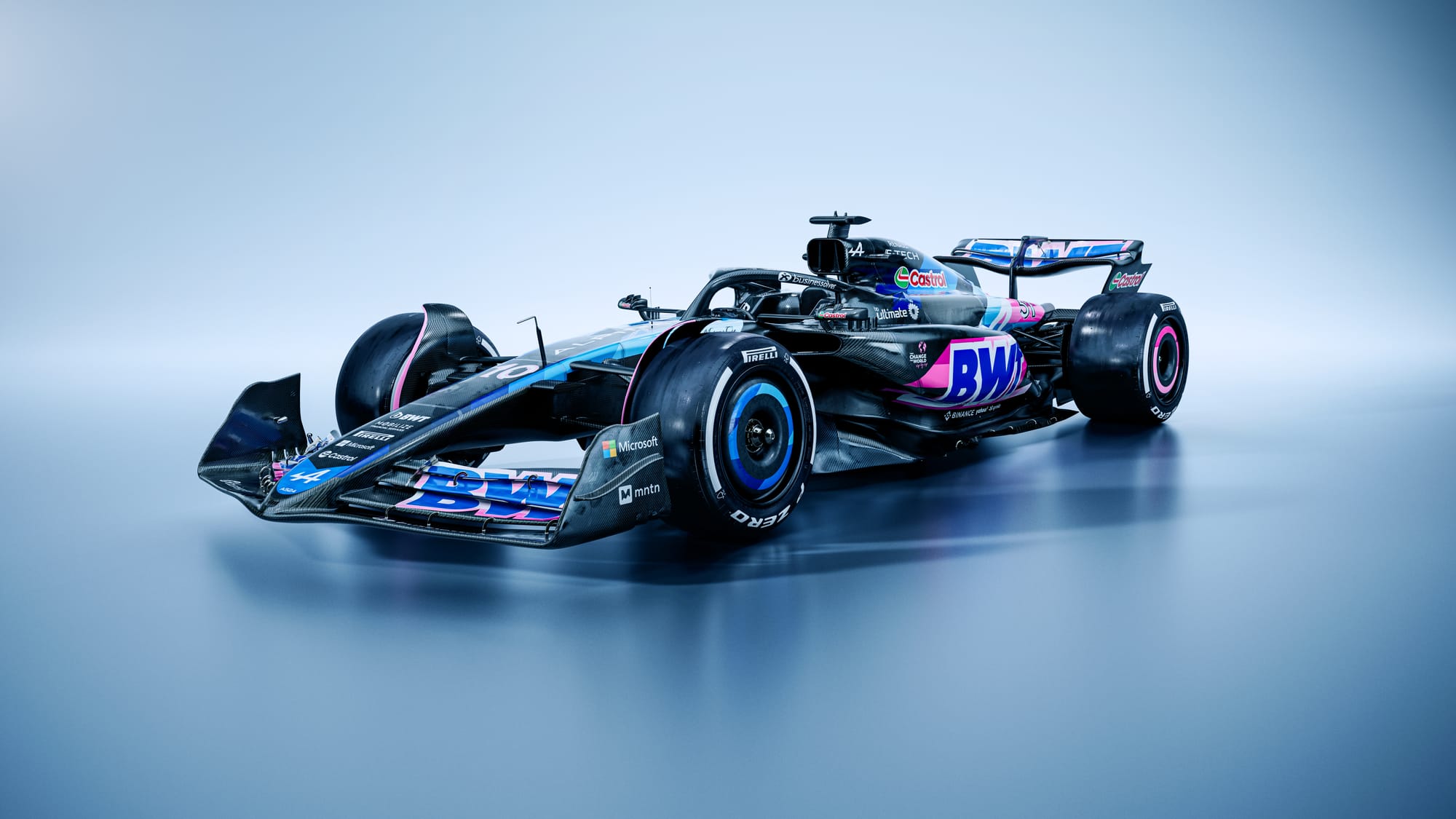
So let’s take a look at that car.
The nose looks very bulbous as highlighted in the yellow lines in the picture below. Even though it looks like it gets wider as it comes forward, the sides are probably parallel from the front bulkhead width - which has a minimum width limit. The usual trend is for the nose section to get narrower at the front but still have enough of a cross-section to pass the front impact test.

Also the top of the nose with this flat section is a little confusing. Again the trend is to make this as narrow as possible with an increasing radius going forward to allow the airflow to bleed off that flat area and go between the front wheels and the sides of the chassis. Setting up a reasonable flow structure right at the front of the car will pay dividends further rearward.
Alpine looks like it’s trying to do a lot of work with the section of front wing just in front of the tyres. The front element in that area is a fairly long cord and the rear flap (highlighted by the yellow ellipse and lines in the image above) also has an extended cord in that area. That’s all fine other than the front wheels are moving objects when steering lock is applied so the front wing loads in that area will change. If, with this design detail, the centre of pressure moves forward with more steering lock, then fine. If it doesn’t, it could lead to inconsistency.
There’s a discrepancy in the height of the chassis and halo (highlighted in the red ellipse above) but this is a result of the angle of the comparison images being slightly different, rather than an actual design change.
The radiator inlet (orange lines in the images above and below) has now gone more in the direction of the Red Bull ‘duck bill’ shaped concept, albeit not as committed as Red Bull's.
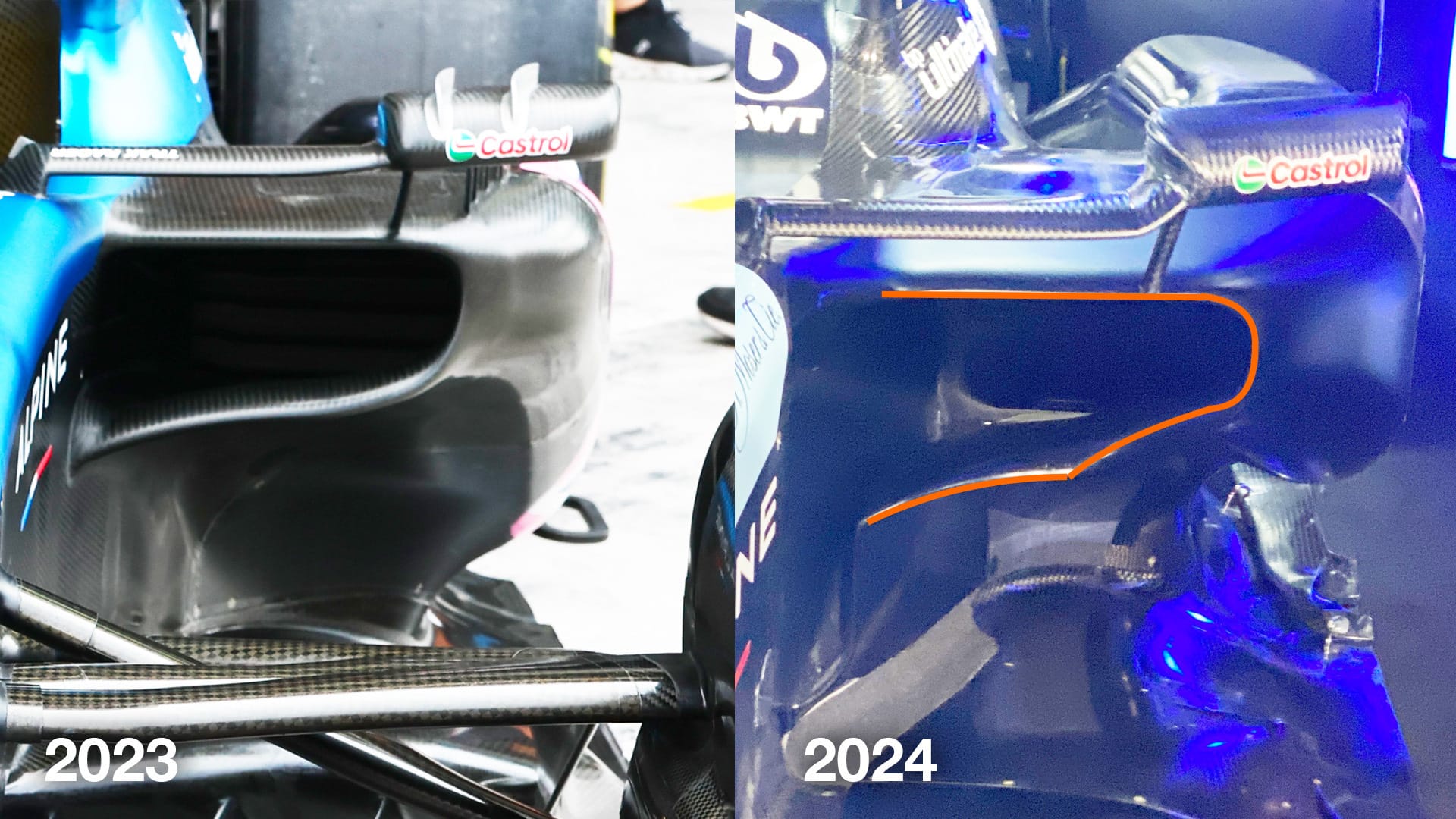
With this radiator inlet and the resulting increased size of the sidepod undercut, the increased airflow through this area can be used to help extract more flow out of the front corner of the floor and also set up the vortices that help generate an aerodynamic seal further rearward. So executed properly it can give you the best of both worlds.

Alpine has retained pushrod front suspension (red line) and with the height difference on the inboard mountings of the front leg of the top front wishbone (dark green line) we can see it has the now de rigueur anti dive on the front top wishbone.
It looks like the rear leg inboard mounting (light green line) is in a similar position to last year with the forward leg (dark green line) mounted higher. It doesn’t look quite as dramatic a vertical offset on the inboard pick-ups as last year’s Red Bull. To be as committed as Red Bull has been in that regard you really need to believe in the concept, and to me it looks like Alpine isn’t quite there yet.
The lower wishbone (purple line above) looks as if it is higher than last year. Though it could just be to do with the angle of the picture, if it has changed it will decrease the angle of the pushrod and increase the loads in the system. This is never a great thing to do.

We can also see above that Alpine has retained the sidepod upper surface gully that it was one of the first to introduce last season. This helps contain the radiator spillage as it goes over that top surface and directs it towards the centre of the car. This spillage is at its maximum at high speed so low ride height and thus increased flow will help the diffuser performance.
This view through the front suspension below shows the level of anti dive on the top front wishbone in a little more detail.
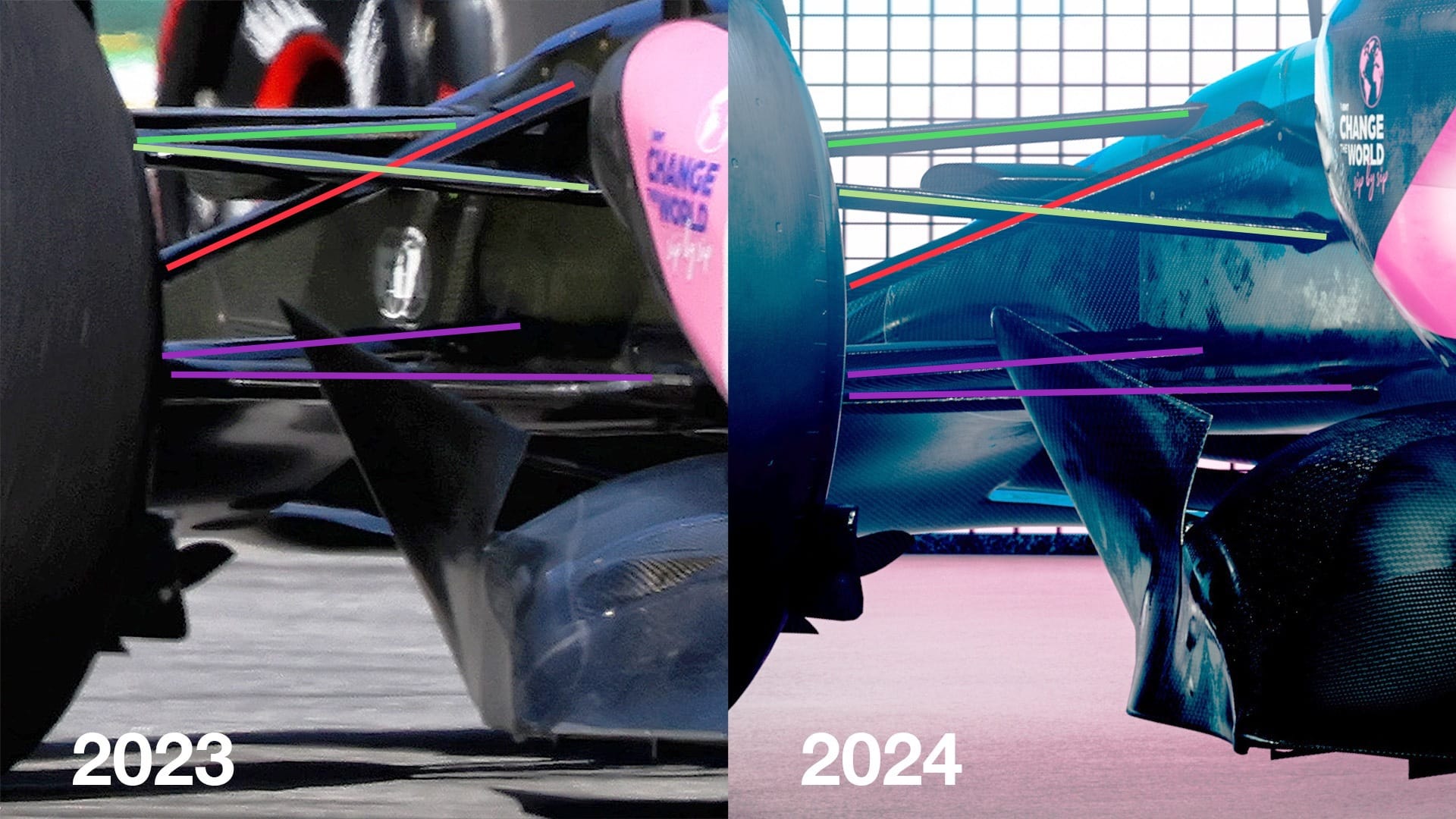
From the side view below we can see the radiator inlet duct detail (orange lines). Again Alpine does not look quite as committed to this philosophy as Red Bull was last year - when two of its major developments were around the height of the inlet duct’s lower edge, so there must be a reasonable return for increasing the height of this body section. What Alpine’s done is still in the same direction and all three 2024 cars we have seen - Haas, Sauber and now Alpine - have gone this way.
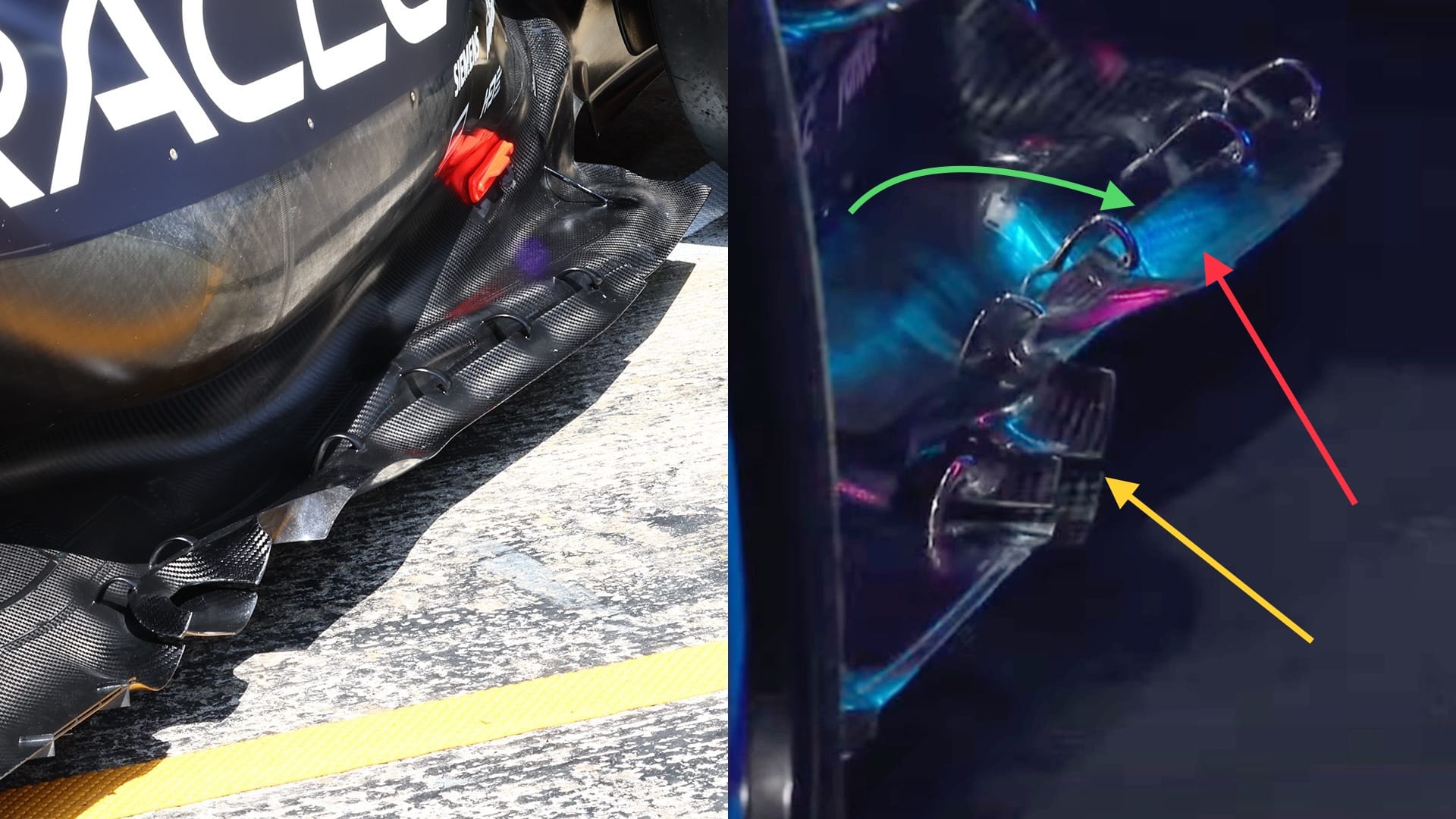
The comparison above between Red Bull's 2023 car and the 2024 Alpine shows there's not much difference in floor design between them. The new Alpine has the longitudinal outer element (red arrow) hung from above, allowing flow through a slot gap. This slot gap (green arrow) will reduce the sealing sensitivity as the gap to the ground alters with ride height changes.
I have used the comparison of a mechanical seal which is critical to ride height and works like an on-off switch against an aerodynamic seal, which is like a dimmer switch and can work progressively.
Further forward on the floor Alpine has similar turning vanes (yellow arrow on the image above) to Red Bull. These help extract the flow from under the front corner of the floor and set up the vortices to work further rearward.
The rear view below shows how one of the two elements of the beam wing is sized and positioned to improve the performance of the diffuser. Together they can make this area very powerful and it’s also very adjustable for lower downforce circuits. Not only that, the upper rear wing will also influence the performance meaning that when the DRS is opened the drag reduction on the complete rear end of the car will be much bigger than each component working independently.

The rear top wishbone inner rear leg mounting is now incorporated in the rear wing central support as it goes around the exhaust tail pipe (red ellipse in the image below).
The exhaust outlet position is defined in the regulations (purple ellipse below) so this change has allowed Alpine to use a straighter tail pipe (purple line) which will reduce the back pressure on the turbo outlet, potentially improving the turbo performance in general and more importantly when charging the ERS or using the instantaneous generated energy coming from the MGU-H.
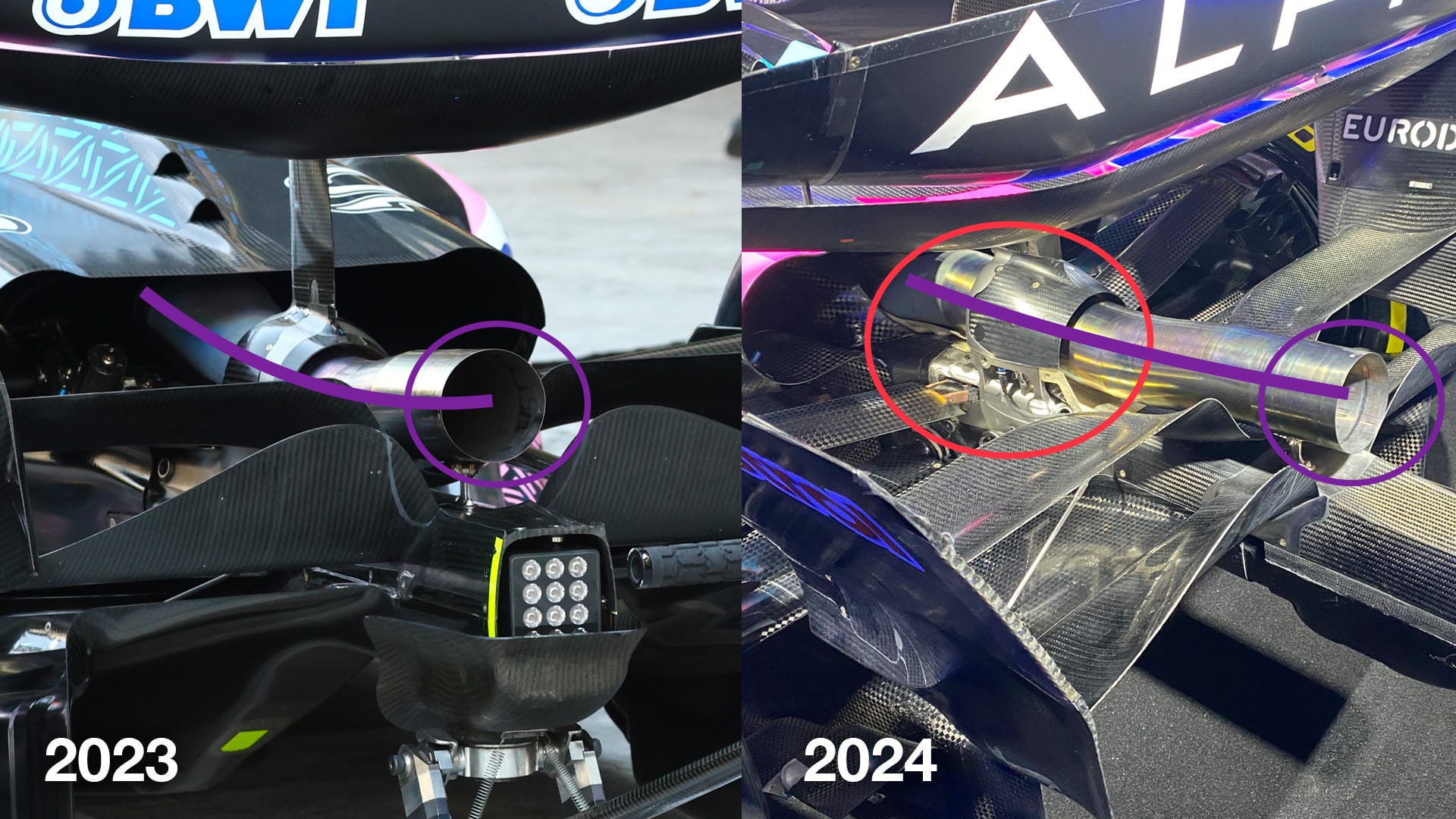
Overall this car is a step forward from last year but it’s still difficult to assess where Alpine might stand in the pecking order. I think it’s a case of what level the others have risen to as I’m not seeing anything too exciting here just yet.


